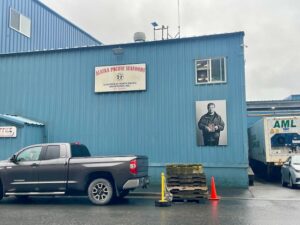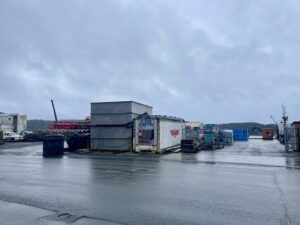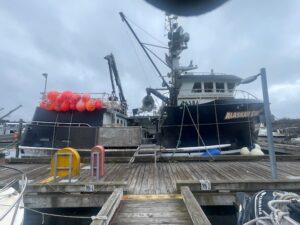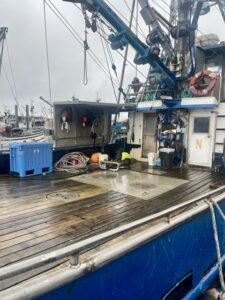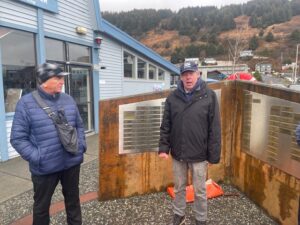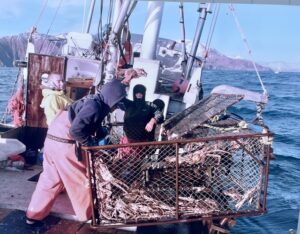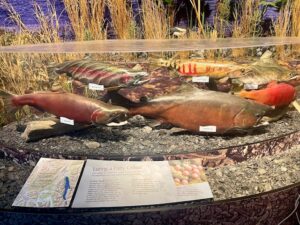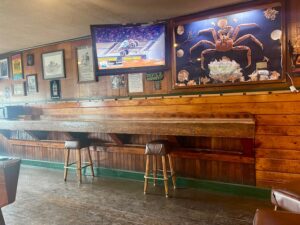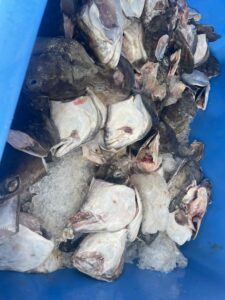
Kodiak, Alaska is breathtakingly beautiful and has rich cultural heritage. The current population of Kodiak is approximately 5400 people. The National Wildlife Refuge spans over 2 million acres and is a major tourist attraction. Kodiak was at one time the capital of Russian Alaska. After the sale of Alaska to the United States in 1867, Kodiak became a commercial fishing center which continues to fuel the local economy. Salmon and halibut are plentiful and the harbor is teaming with fishing boats and processing plants that both can and freeze the harvest of fish that comes into the port daily. Warehouses and containers outside are made ready to either ship or drive the finished product to many different areas throughout the state and beyond. The port is home to 650 boats, including the state’s largest trawl, long-line and crab vessels, and 12 shore-based processors.
During Russian control, the harvest of sea otters and other fur-bearing animals drove them to near distinction and 85% of the native population had disappeared either to other areas or from exposure to European diseases and violence. It was at that point the decision was made to sell the land to the US. Had it been even 10 years later, the Russians would have realized that, through innovation and modernization the fishing industry would more than support and area and drive an economy that still thrives today.
Our tour today gave us some insight into commercial fishing, which neither of us knew anything about. We began at the Kodiak waterfront and learned about the boats, gear and lives of commercial fishermen. We saw plenty of different types of Alaskan fishing vessels and equipment, crab pots, nets and hooks fishermen use to catch seafood off the Alaska coast. We were able to examine a fisherman’s cold water survival suit and view activity along the docks while boats were readied for launching out to sea. Our guide had been a fisherman in the area since 1975. He was well schooled in everything to do with the sea.
He also told us about the Great Alaskan Earthquake and Tsunami of 1964 which destroyed most of the town of Kodiak and its fishing fleet. As we walked along the docks he pointed out his son’s boat, a 58 foot vessel that just returned to harbor after four months at sea. This boat brought in over a million pounds of fish while at sea and had a hold that held 200,000 fish at a time, if needed. Boats that act as tenders unload the bounty and transport them back to land so that the trawlers can stay out and fish. The fishing lines have 250,000 hooks loaded onto them and pull in many fish per day. Last year, 94 million pounds of salmon were hauled in from this area in a six week period. All five species of wild Pacific salmon- chinook, sockeye, coho, humpback, and chum – return to spawn in one of the 800 salmon streams in the Kodiak Island Archipelago, before heading back out to sea.
Our tour ended downtown at the marina and we proceeded to visit the city museum and Henry’s, a local restaurant, for a lunch of fish and chips. It was absolutely delicious and had been processed just down the street at one of the plants we had just walked by. On our way back to the ship we stopped at Alaska’s oldest bar and had a beer and chatted with some locals. The pictures below that have the blue garbage can visible, had many locals taking advantage of the free halibut heads from today’s catch. I asked what they used them for and the woman I approached said, “soup” broth.
Fun Facts: Our guide also stated that there is no garbage service at their homes because they use dumpsters that are bear proof to dispose of garbage. Bear density in the area is estimated at 220 bears per square mile – the highest reported concentration of brown bears in North America. Compare that to the highest densities in Denali National Park, which are only about one bear per 12 square miles. That might have something to do with the salmon spawning that goes on throughout the island. You think?
The other thing they struggle with is birds. The readily available fish and garbage generated by the cleaning and processing of them attracts many birds to the area. He said they can spot a garbage bag from miles away and if you don’t dispose of the garbage immediately, that you may be transporting to the dumpsters, it will be torn apart in minutes.
The winter temperatures here are affected by the sea and its position in the ocean, the temperature rarely dips lower than 10 degrees and the harbor rarely freezes which allows for year round boat activity. The snow often melts as temperatures vary. It is one of the warmer spots in Alaska. It is often cloudy in Kodiak and as a result it was spared from bombing during WWII. Everywhere we visited today it was mentioned that we missed a sunny day yesterday, it is that rare except for height of summer.

